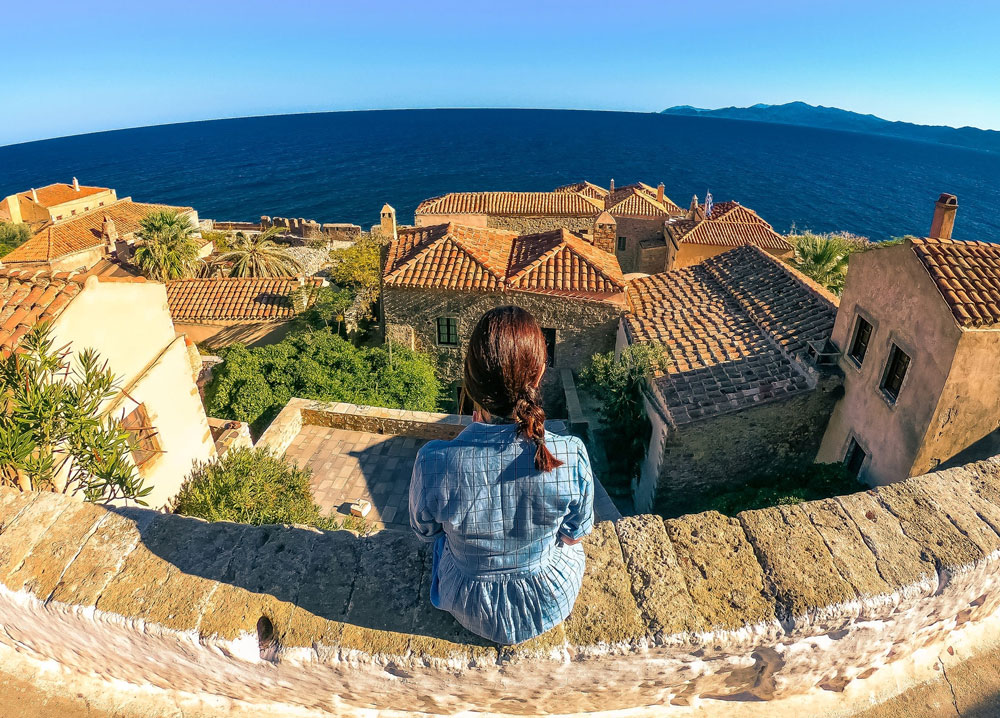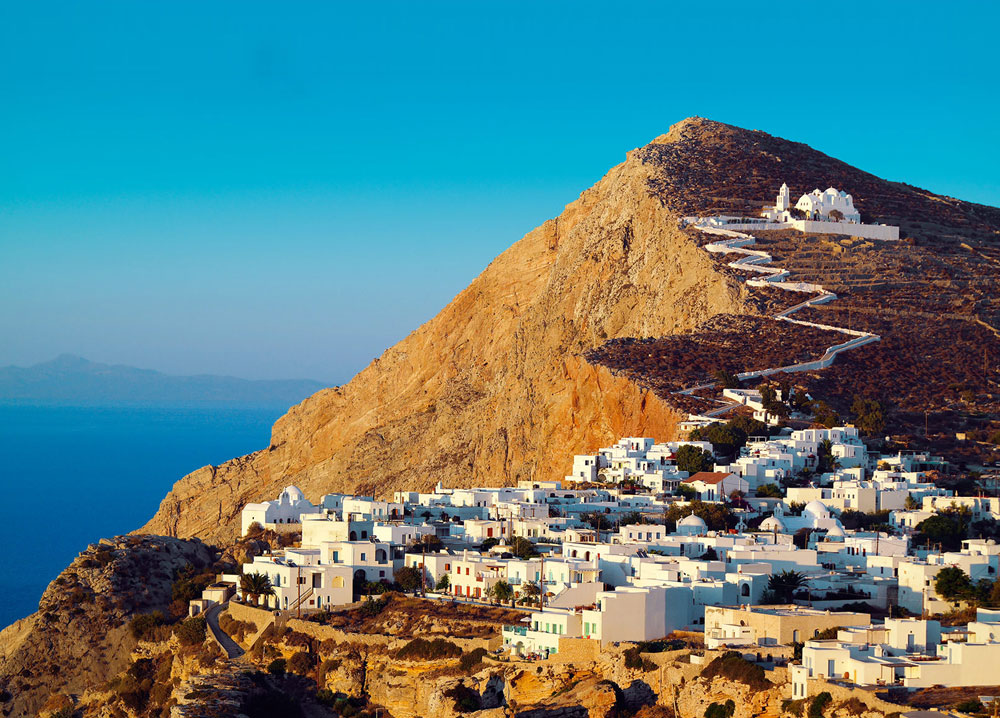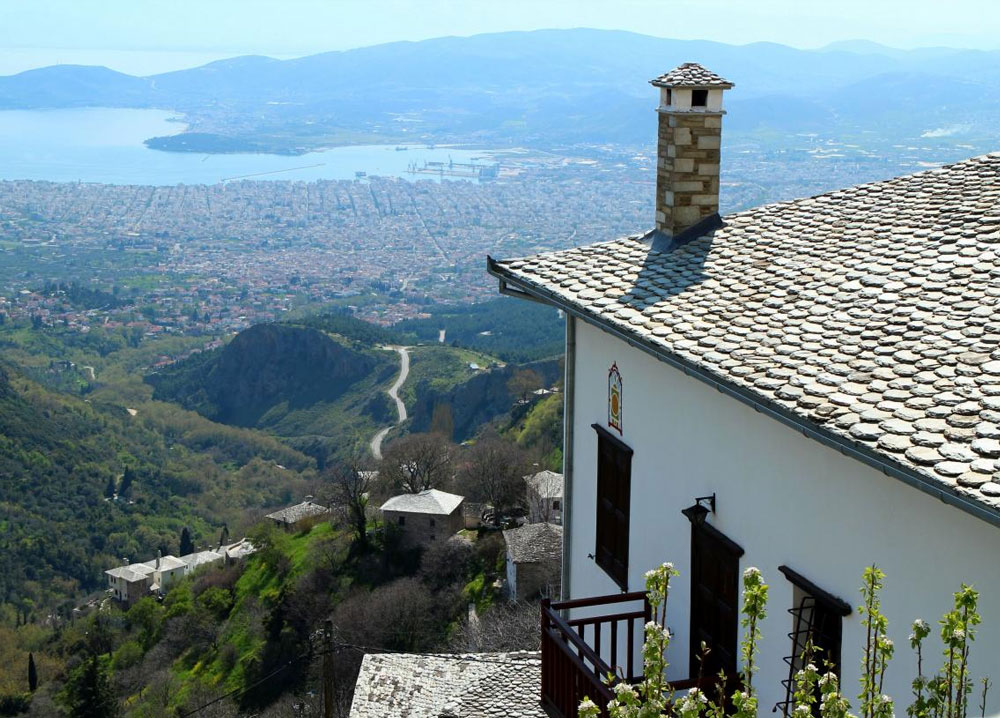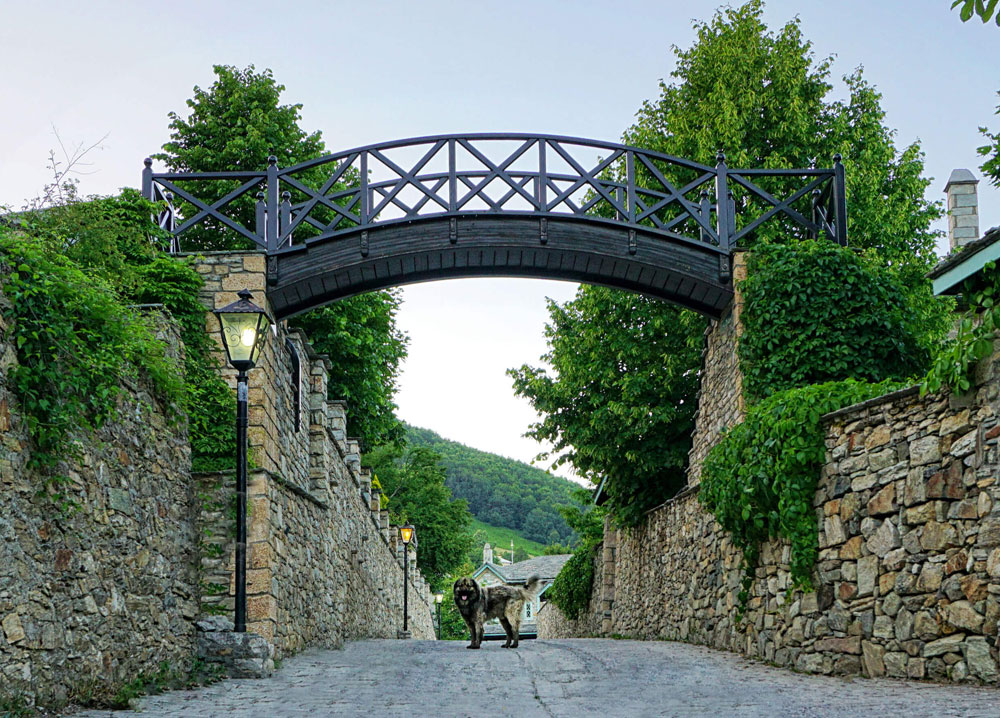Hidden Greece: Untouched Villages
In fact, scattered along quiet roadways, perched high on cliff tops or tucked away in deep tree-lined gorges are wonderfully remote and untouched Grecian villages that can offer you tranquility and peace in a gorgeous Mediterranean setting.

Monemvasia – Peloponnese
The island of Monemvasia was separated from the Greek mainland by an earthquake in 375 AD. It remains quite isolated today, connected to the mainland by only a single narrow bridge.This isolation has kept Monemvasia relatively untouched in relation to the rest of Greece, a great boon for the intrepid traveller.
The medieval village resides inside the island’s perfectly preserved fortress, originally built as a refuge from pirates. After you cross the narrow causeway, the island’s single entrance is via a narrow tunnel through a formidable fortified wall. But as you emerge from the tunnel, you enter another world. Overlooking the stunning aquamarine PalaiaMonemvasia Bay, many of the village’s cobblestone streets remain wide enough only for pedestrians and donkey traffic.
You’ll soon forget the fortress surrounding you as you find yourself passing by beautifully restored stone buildings and weaving around ambling locals who stop to chat and pass the day.
If you follow the main road it will lead you directly to the central square and the wonderfully preserved 13th century Cathedral of Christ in Chains. You should also visit the Byzantine church of Hagia Sophia. The beaches are considered wonderful, and the local wine divine. In fact, with its gorgeous beaches, secluded nature and wonderful local culture, Monemvasia is widely held to be one of the most romantic destinations in all of Greece.

Chora Folegandros – Cyclades
Chora also happens to be a well-kept secret, and it is only very recently that tourists have happened upon its quaint buildings. In fact, most of the wooden signs over the shops are still handmade by the shop owners themselves and hearken back to a time when everyone on the island knew what everything was, regardless of signage. It is still possible, and encouraged, to join locals in one of the tiny tavernasthat line the lanes and squares, to play games and eat cake and while away the balmy afternoons.
As one of the oldest medieval towns in the whole of the Cyclades, many of the village homes form part of the castle itself. Walk amongst these homes, and the numerous churches that are dotted between them and take in the almost impossibly blue waters of the Aegean that lie below.
If you can, align your trip to Chora with the Greek Easter holiday and you will be able to enjoy seeing the local households throw open their doors as an image of the Blessed Virgin Mary is carried reverently through the village. Be sure to also take the walk from the cemetery to the church of Panagia, to experience truly breathtaking views of the sunrise or sunset.
With small hotels, secluded coves, a slow meandering pace and a quiet remote air, Chora village will take you back in time.

Makrinitsa – Pelion
Stop into the smallneighbourhood shops where you can buy local herbs and liqueurs and handmade traditional egg pasta, known as hilopites, then make your way to the central square. Here you will find a lush oasis in the middle of the village, where you can enjoy a coffee or a glass of wine while lounging under a canopy formed by hundred-year-old plane trees. Make sure to listen to the sounds of the marble and bronze ‘Three Lions’ water fountain, dating from 1809.
Better yet, for those seeking quiet and solitude, Makrinitsa is the gateway to the mythological land of centaurs, nymphs and warriors on the remote peninsula of Pelion – at least according to local lore. Regardless of what fairy creatures you may or may not find, this glorious area is best explored by walking the kalderimia – the ancient cobbled paths and donkey tracks that lie amongst the lush undergrowth dotted with wildflowers.

Nymfaio – Florina
Nymfaio owes much of its architectural charm to its history as a gold and silversmithing community. This began in the late 1600s and lasted nearly 300 years, thrusting this small village into a prominent role in the area. While there is no smithing done in Nymfaio today, you can still visit the Neveska Chrisikos House, which is a central landmark of the town and houses the Gold and Silversmithery, Folklore and History Museum.
Today, this little gem of a village has another important reason to be thrust into the limelight– and that is due to its wonderful conservation work on behalf of the local brown bear and wolf populations. In fact, it is home to the environmental centre Arcturos that works tirelessly to protect these beautiful animals. It is open to visitors and at a mere 15-minute walk from the village is well worth a visit (and a donation).
Nymfaio is a favouritedestination for Greeks but is still relatively unknown to foreigners. It is the perfect place to unwind in the natural beauty of the surroundings.
